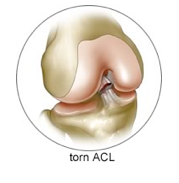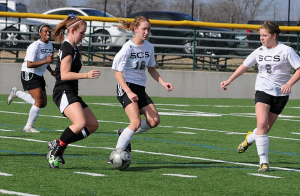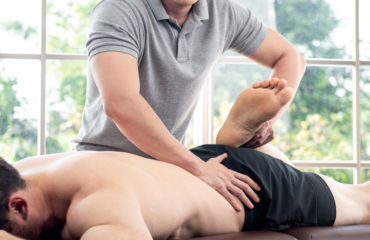There are times when you are running, jumping, playing hard and generally, very into the game, when suddenly you hear something, a ‘popping’ sound. At times, you can even feel it. Immediately after, it’s not uncommon to feel as if the rug has been pulled out from under the feet and all the air has left your lungs.
What happened? There’s a very high probability that you have torn the anterior cruciate ligament or ACL for short, in your knee. A torn ACL in the knee is considered to be a very significant sports injury, which can very  well put an abrupt end to your season.
well put an abrupt end to your season.
Although this injury is common in sports, many people don’t realize that more women as compared to men are at risk of suffering from it. So, what is the meaning behind this obvious gender disparity?
To answer this question, researchers studied athletes’ bodies when they were in motion and what they discovered from the careful analysis could very well prove to be beneficial and help you avoid ACL injury in the future.
Anatomy of the Knee Explained
There are four main ligaments that can be found inside the knee. The objective of these ligaments is to tether the shin bone to the femur, right at the point where the bones come together and meet the joint. The ACL can be considered as a vital stabilizer of the knee, which functions to help keep the tibia (shin bone) from sliding under the femur. The very important ligament also helps limit extreme rotation, which can adversely affect motion and movement of the body.
‘Cutting’ and ‘Planting’ are two moves that are often used in sports and are the ones associated the most with ACL injuries. In fact, nearly 70% of injuries occur due to these two moves.
Cutting: This involves taking a hard and quick step to accelerate in another direction.
Planting: Involves landing firmly on the feet, immediately after a jump or step.
Why Are Women More At Risk Of This Injury?
Researchers who were studying the motions of athletes also found out the causes and factors that contribute to an increase in ACL injury in women. They are;
- The way each athlete performs and lands from a jump differently
Women have a tendency to use the front of their thighs i.e. quadriceps when executing a jump and stop maneuver. Men on the other hand, use their hamstrings, i.e. back of the thighs first. Both the motions put different amounts of strain that are applied directly to the knee ligaments.
On the other hand, athletes who land on their feet with their knees slightly wider apart have a much decreased risk of the injury as opposed to athletes who land with their knees closer together, i.e. women.
- Fatigue Is Hazardous
Athletes who are tired are more likely to adopt poor landing mechanics as compared to their counterparts, which is probably why coaches substitute the tired and fatigue ridden athletes as soon as possible.
While nothing can stop or prevent ACL injuries from happening, understanding the potential causes can help derive effective injury prevention strategies for the future of women in sports.
Dr. Adam Farber at Phoenix Shoulder and Knee is a top sports medicine doctor in Arizona. He offers comprehensive nonoperative and operative treatments for the knee in Phoenix, Scottsdale and Tempe.
Call (480) 219-3342 today!



